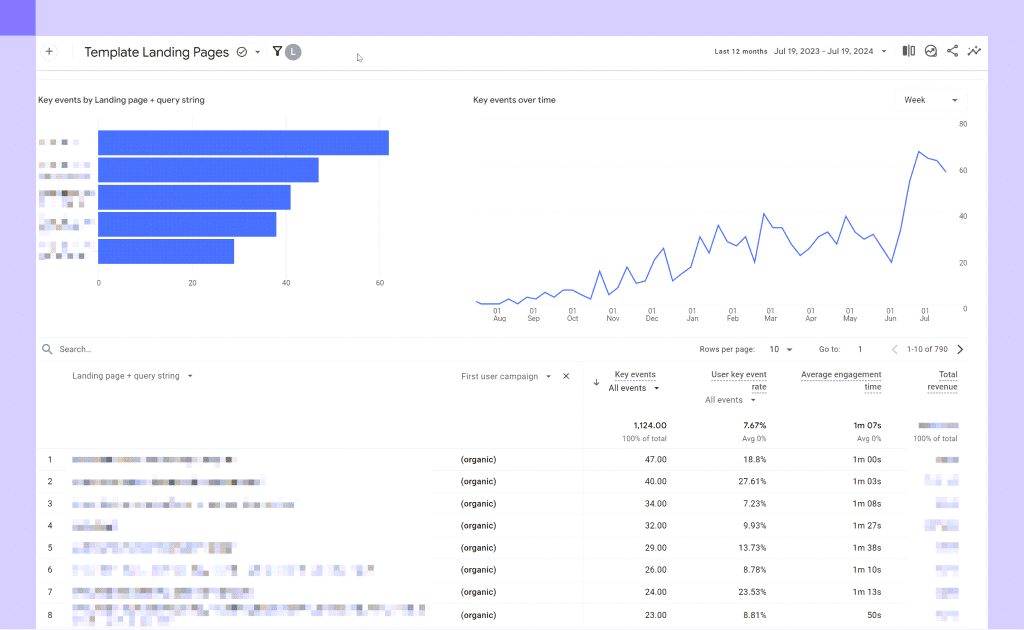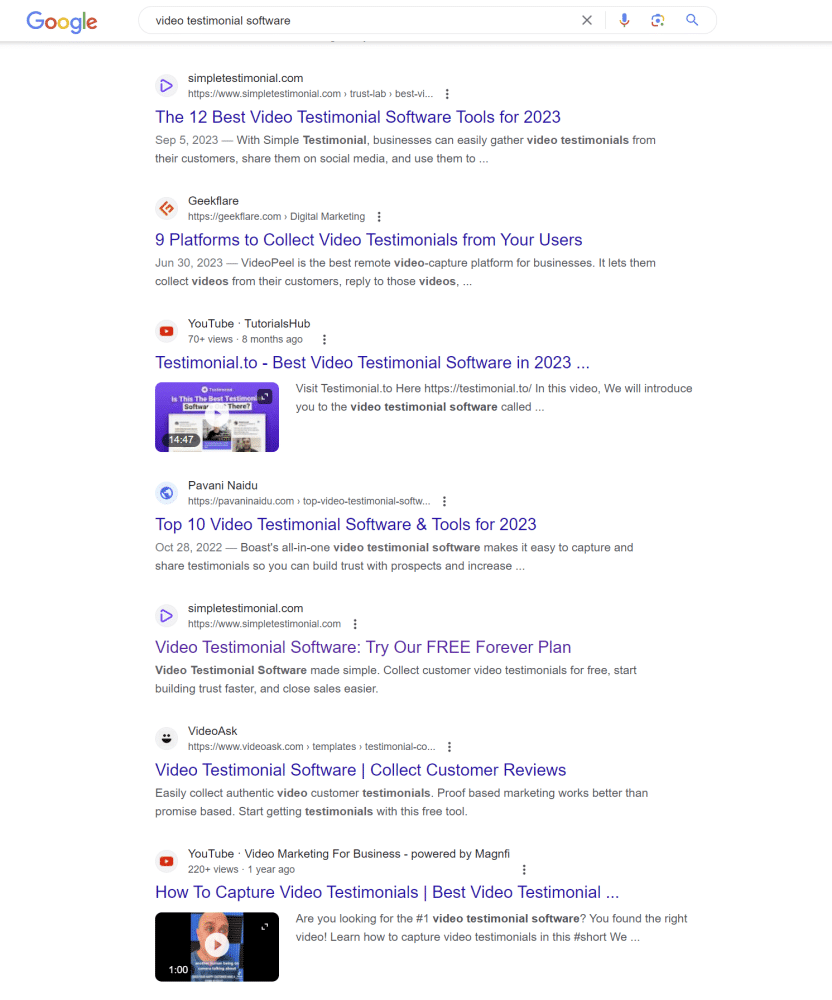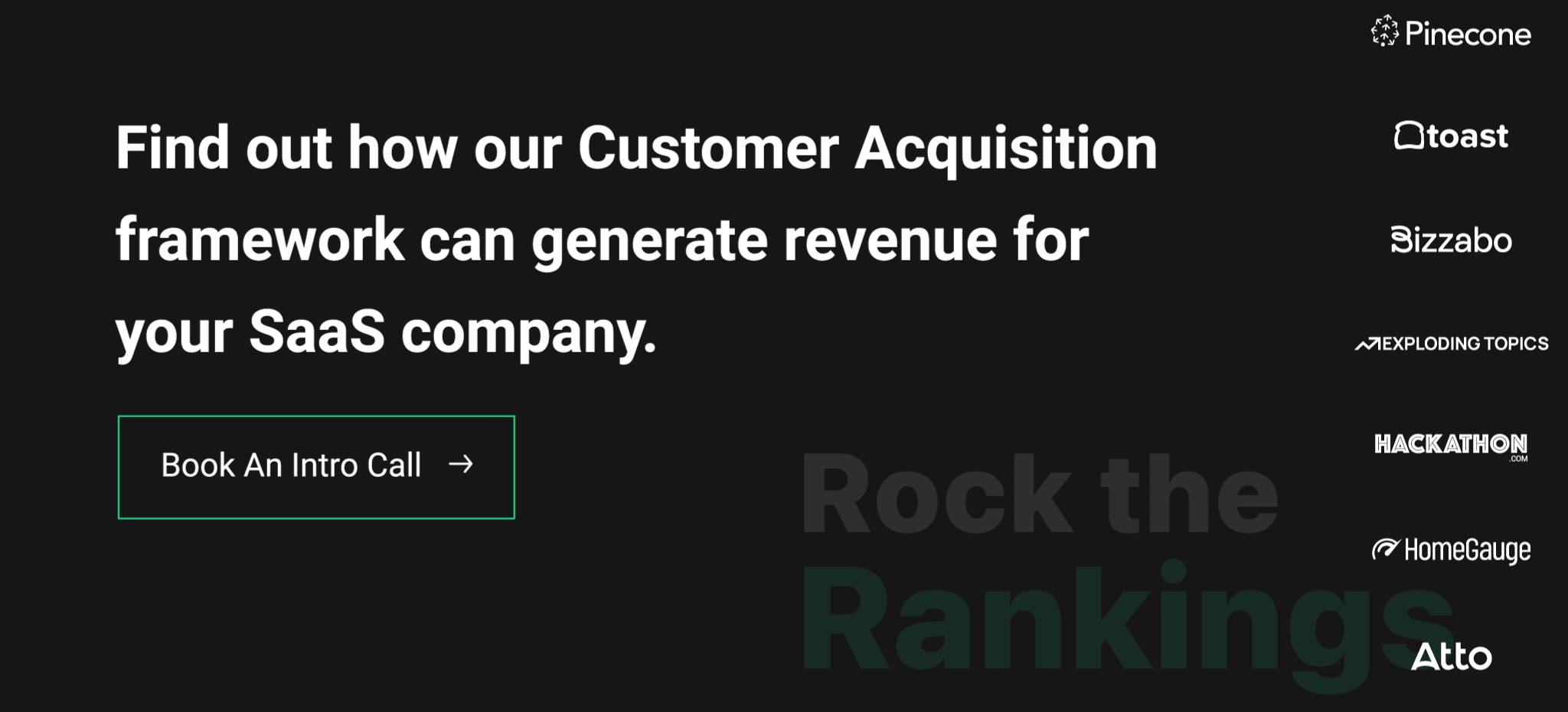Is your SEO agency driving growth or just draining your budget?
Many businesses stick with underperforming agencies out of habit, but the cost of complacency can be steep.
If you’re not seeing clear ROI, it might be time to reevaluate the partnership.
The problem? Most marketers don’t know how to directly attribute revenue gains to SEO efforts.
Here’s how to decide if it’s time to cut ties and take control of your search strategy and how to ensure clear ROI from your agencies’ efforts.
Some agencies concentrate on activities that seem significant but don’t contribute to real growth.
For example:
These tasks can inflate costs without providing real value and simply waste time to result.
For SaaS businesses, proper content strategy, SERP research, and quality links will drive 90%+ of results.
Everything else, mostly, will be a waste of time when it comes to owning SERP rankings.
Here at Rock The Rankings, we work to map out our core priorities, which will have a real short-term impact on driving demos and signups.
The SaaS SEO roadmap tackles the common pain point of misplaced priorities often seen with SEO agencies by focusing on impactful, conversion-driven strategies:
Unlike agencies that waste time on low-impact tasks like fixing 404 errors or creating excessive new content, this roadmap emphasizes four high-priority actions: reducing index bloat, optimizing product pages, leveraging competitor comparison pages, and improving existing content.
Each step targets specific areas that drive measurable results, such as boosting high-intent traffic and improving rankings for key terms.
By realigning efforts toward these proven strategies, businesses can achieve faster, more meaningful organic growth without waiting 12+ months for outcomes.
Additional Reading: SaaS SEO Roadmap: Building a Revenue-Focused SEO Strategy
When working with an SEO agency, having clear and open lines of communication is crucial.
This can be a red flag if your agency isn’t regularly updating you on its efforts or progress.
They should provide detailed reports about their activities and results, ensuring you understand the real impact on conversion metrics – not fluff, vanity metrics.
Additionally, a lack of communication can lead to a breakdown in trust, making it difficult to effectively collaborate.
Remember, it’s your business or your marketing team, and you deserve to know how your SEO efforts are being handled.
Any agency should be providing clarity on direction and progress, including how we work at Rock The Rankings:
Additional Reading: SaaS SEO KPIs: Tracking Bottom-Line Metrics
For low ACV, PLG-focused products, when leveraging GA4 we always set up direct conversion tracking via custom reports:

GA4 will provide direct conversion metrics when properly configured to track out SEO conversions from the initial landing page to sign-up.
Additional Reading: How to Setup Landing Page Tracking with Attribution in GA4
SEO success isn’t just about keyword rankings.
It’s important to target keywords that bring right-fit traffic to your site.
Some agencies might fixate on vanity metrics, celebrating rankings that don’t meaningful traffic or conversions.
It’s quite common to see a jump in organic traffic, yet you find out the agency has been overly focused on winning easy TOFU (top-funnel) rankings where searchers are likely no where close to looking for a product or service, rather consuming informational content.
It’s crucial to partner with an agency that focuses on generating quality traffic that aligns with your business goals.
Prioritizing bottom-of-the-funnel (BOFU) keywords in your SEO strategy can significantly drive conversions and generate better ROI.
Bottom funnel keywords are where searchers already know that a solution like yours exists, they simply need to know that you exist and understand better that you get their core pain, that you can solve that pain, and provide them with their desired outcome.
To successfully rank for bottom-of-the-funnel (BoFU) keywords and boost conversion rates, you need to create well-crafted content that targets audience searching with high purchase intent.
You can assume a keyword’s search intent – which is where many writers and marketers go wrong.
Before ever building a page that’s meant to rank in Google, you always first want to analyze the SERPs to ensure that you’re building the right type of content to meet the search intent:

How to do it?
Simply Google your target keyword, and take note of the top 10 ranking pages:
When you try to optimize an article or landing page for SEO, including keywords won’t be enough, you need to ask yourself these fundamental marketing questions and make sure that content resonates, but also is built to be able to rank in Google.
If you try to rank a how-to article when all of the competing articles are listings for that given keyword, you’re likely going to fail while.
Designing the structure of a webpage plays a crucial role in ranking for bottom-of-the-funnel keywords, which are integral to driving conversions.
Effective page design incorporates various elements that align with content strategy and emphasize user experience:
Additional Reading: SaaS Landing Page Design 101
Throughout the design process, focus on creating a user-centric page that facilitates a smooth path to conversion.
To properly structure your page, it all starts with your potential customer’s problem.
What is the number one thing that’s keeping them up at night?
What’s causing them pain and agony during their workday that they’d pay any amount to solve?
B2B SaaS customers purchase a product because it solves a problem.
If you can clearly state the problem that your product solves:
You need to truly understand the primary problem they have, which is the one they’re willing to pay for to fix with your solution.
Further Reading: Copywriting Best Practice for SaaS
The next is focusing on the desired result or outcome they’ll feel after using your product.
They have a primary problem they’re looking to solve, right?
By solving this problem, what’s the desired outcome and result?
Here are a few examples:
What is it they want to achieve by solving this specific problem?
The more you can quantify the cost of not fixing the problem itself, along with the more you can help your potential customers understand the desired outcome they want to achieve and visualize how you’ll help them achieve that – the more you’re going to connect and be able to convert.
Optimizing on-page SEO is a critical step for ranking bottom-of-the-funnel keywords, which are instrumental for any content marketing strategy aiming at conversion:
Further Reading: On-Page SEO Guide
The final ingredient in the recipe is building links.
Without links, you’re going to struggle to be able to rank in many cases due to competition in the SERPs.
Links include both:
Getting “natural” backlinks to your bottom-funnel pages is easier said than done.
There are different ways to approach landing links to these pages, but generally, getting backlinks to other pages and properly internally linking can also help to satisfy the links required to rank in the top positions of the SERPs.
Return on investment should be a focal point for any SEO agency.
Choose an agency that emphasizes measurable returns (demos, trials, pipeline) and holds itself accountable for demonstrating the value of their efforts.
Any SEO agency worth their weight should be:
Successful SEO requires consistent effort and results over time.
Quick wins might be exciting, but steady progress is what truly builds success.
Instead of pursuing short-lived spikes in traffic, an effective agency will aim for gradual and continuous growth.
If you’re starting to plateau, it might be time to get a second set of eyes on your current efforts.
When choosing an SEO agency, finding one that treats the partnership as more than just a transaction is vital.
Look for an agency that genuinely invests in your company’s growth.
You don’t want an agency that assigns you a junior account manager with 1-2 years experience, juggling 30-40+ accounts at a time.
The right agency will take time to grasp your business dynamics, dedicate time to crafting a strategy that will result in real business impact, and be available to consult and offer guidance when needed.
Search trends and techniques can shift rapidly, so it’s crucial for an SEO agency to keep pace with these changes.
An example of this is the recent shift in Google’s AI overviews, as well as the emergence of SearchGPT.
Additional Reading: How to Rank in SearchGPT
A progressive agency should experiment with fresh tactics and be on top of algorithm changes, as well as what’s coming down the pike.
SEO and search will continue to evolve, and any great agency will be on top of those changes.
Effective communication is the backbone of a successful partnership with an SEO agency.
You want an agency that over communicates keeps you informed about campaign progress and wins – this is imperative for internal team motivation, especially knowing that in some cases, results may not always be short-term.
Again – the best thing you can do is to avoid those that assign you to overloaded account managers who rarely update you.
This is the typical experience you’ll find with larger agencies, that are often times churning and burning clients.

If your SEO agency isn’t driving clear ROI, it might be time to cut ties and take control of your strategy.
Watch for red flags like misplaced priorities, such as focusing on vanity metrics or low-impact technical fixes instead of driving conversions.
Effective agencies prioritize actions that lead to tangible business outcomes, like demos or signups and maintain open, transparent communication with regular updates.
To ensure success, choose an agency that focuses on your specific industry, adapts to evolving SEO trends, and consistently delivers measurable results.
Founder of Rock The Rankings, an SEO partner that helps B2B SaaS brands crush their organic growth goals. An avid fan of tennis, and growing micro-SaaS businesses on the weekend. 2x SaaS Co-Founder – Currently working to build and scale Simple Testimonial.
Book a 1-on-1 intro call with our founder that includes a FREE custom marketing plan. Start growing faster, today.